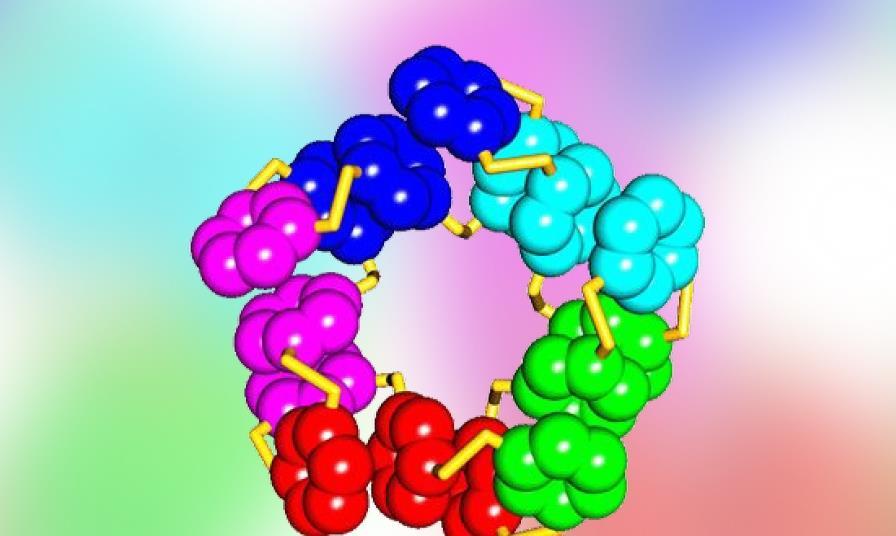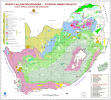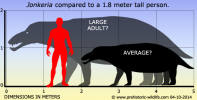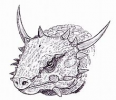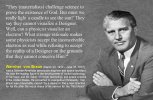AronRa
Administrator
I'm going to skip over most of the irrelevant red herrings, attempted insults and other off-topic nonsense. Otangelo keeps posting things I already read and understand, but that he doesn't understand, and he thinks I don't know already know about the things I would then have to explain to him. All in due time. I'm not going to be spammed all at once with every alleged "problem" he can find on his propaganda sources.
I really didn't need to reply to anything in this whole post as none of was really relevant or substantive.
That is the same thing I already said, but of course you didn't understand it.Aron Common descent is not a hypothesis. It is confirmed.
Reply: Well, then why do science papers disagree with you? Prokaryotic evolution and the tree of life are two different things
The concept of a tree of life is prevalent in the evolutionary literature. It stems from attempting to obtain a grand unified natural system that reflects a recurrent process of species and lineage splittings for all forms of life. Traditionally, the discipline of systematics operates in a similar hierarchy of bifurcating (sometimes multifurcating) categories. The assumption of a universal tree of life hinges upon the process of evolution being tree-like throughout all forms of life and all of biological time. In prokaryotes, they do not. Prokaryotic evolution and the tree of life are two different things, and we need to treat them as such, rather than extrapolating from macroscopic life to prokaryotes. In the following we will consider this circumstance from philosophical, scientific, and epistemological perspectives, surmising that phylogeny opted for a single model as a holdover from the Modern Synthesis of evolution.
https://www.ncbi.nlm.nih.gov/pmc/articles/PMC2761302/
I'm not reading your blog or your mined quotations.And i am wondering if you know something about the 9 points i mention demonstrating why common ancestry is bunk, that i don't know?
https://***************************...-descent-the-tree-of-life-a-failed-hypothesis
I don't know. But it doesn't matter either way.Aron: We have observed the change from unicellular to multicellular organisms in the lab,
Reply: Did cell-cell adhesion proteins, and signaling evolve in parallel ? If so, based on what evolutionary pressures ?
Does it matter? I mean, I'm sure I can find it. I've found other studies like that. But do I really need to waste my time answering your question when you'll only ignore the answer again?Aron: Now in the 21st century, they added a couple more mechanisms, epigenetics and endosymbiosis, and it is now the "modern evolutionary synthesis".
Reply: Yes, of course, easy deal. What evolved first: The histone code, readers, erasers, or writers?
It is NOT my job to disprove your unsupported assertions. It is your job to show that they are justified.Aron: In this case, you were once again expected to produce some truth to your position, which you simply refused to do.
Reply: That would actually have to be your job. Once you prove that natural mechanisms suffice to explain all phenomena in the natural world, you can categorically accuse creationists to be liars. Then we are on the same level as flat earthers. I have not yet seen that day come. And until then, you are doing what you accuse us of doing. Making unsupported claims.
Again, and both of our citations already said this, and contradicted your claim of two different kinds of science.Aron: You citation agreed with this, listing one and only one scientific method, and then explained how that one method is applicable to both current or historical applications. But it's not a different "kind" of science.
Reply: Koonin disagrees with you. And so do i. They are different disciplines because they answer different questions. The origin of life is the most difficult problem that faces evolutionary biology and, arguably, biology in general. Indeed, the problem is so hard and the current state of the art seems so frustrating that some researchers prefer to dismiss the entire issue as being outside the scientific domain altogether, on the grounds that unique events are not conducive to scientific study.
Theology is literally just man-made mythology. There is no practical question it can answer.Aron: If we detected that an intelligent designer was involved, we would use science, not theology.
Reply: We use science to understand how the world works. That gives us hints and direction if intelligene was more likely involved or not to create it. The identity is a quest of philosophy and theology, since God is not demonstrating himself to us.
Your definition fails to account for most of the gods that have ever been worshiped. Try again.Aron:You didn't even properly define what a god is.
Reply: A personal agent, endowed with power, and intelligence, existing above the natural world, without a beginning, and without an end.
My aim is not to defend naturalism. That wouldn't even make sense. Since you are unable to provide any reason to believe in the supernatural, then I have no reason to believe it. That's all. My aim was to try to explain evolution to a dishonest prejudiced and willfully ignorant troll who will not properly engage.Aron: It doesn't make any difference how the universe began or if it did.
Reply: If your aim is to defend naturalism as a consistent worldview, the origin of the universe, and why there is something rather than nothing, is a central issue.
I didn't dodge anything. Nor did you lob anything needing a dodge. But I do expect you to show actual factual science to back your assertions, yes, instead of the lies and bullshit you've been posting so far.Aron: More quote-mining. It is deliberately dishonest and misleading, but as I said, it is ubiquitous among creationists.
Reply: Nice doge. Do you expect me to provide an answer that comes from experimental evidence that has grown out of my own crap in the backyards ?
Why doesn't it bother you that nothing you say makes any sense? You're saying that a brother and sister can't be different from each other unless they're completely different from their parents?Aron: Now you know better. Evolution is a theory of biodiversity wherein one cannot grow out of one's ancestry.
Reply: Each branching point in the tree of life would therefore not be possible. You refute your own phylogeny claim, LOL.
Thank you for admitting that so much of all that unnecessary spam you posted was irrelevant lies deliberately misrepresenting what evolution really is.Aron: See? I told you didn't know what macroevoluiton is. So that you do know, do you understand and accept that these are the actual definitions of those terms?
Reply: Did you just ignore the follow up at the link, just to make a point and attempt to portray me as ignorant? yes, i agree with your decription. But you are not telling me anything new that i have to be educated with. I continue:
Some human cells are not able to live independently either. You didn't understand this paper just like you haven't understood anything else so far.Aron: In addition to the documented development of new enzymes and chromosomes, novel synthesis abilities, denovo genes, and retroviral resistance, notable examples include the evolution of a new multicellular species arising from unicellular algae under direct observation in the lab.
Reply: Volvox is not helping you.
Unicellular and multicellular Organisms are best explained through design
https://***************************...r-organisms-are-best-explained-through-design
The situation in Pleodorina and Volvox is different. In these organisms, some of the cells of the colony (most in Volvox) are not able to live independently. If a nonreproductive cell is isolated from a Volvox colony, it will fail to reproduce itself by mitosis and eventually will die. What has happened? In some way, as yet unclear, Volvox has crossed the line separating simple colonial organisms from truly multicellular ones. Unlike Gonium, Volvox cannot be considered simply a colony of individual cells. It is a single organism whose cells have lost their ability to live independently. If a sufficient number of them become damaged, the entire sphere of cells will die.
I really didn't need to reply to anything in this whole post as none of was really relevant or substantive.

